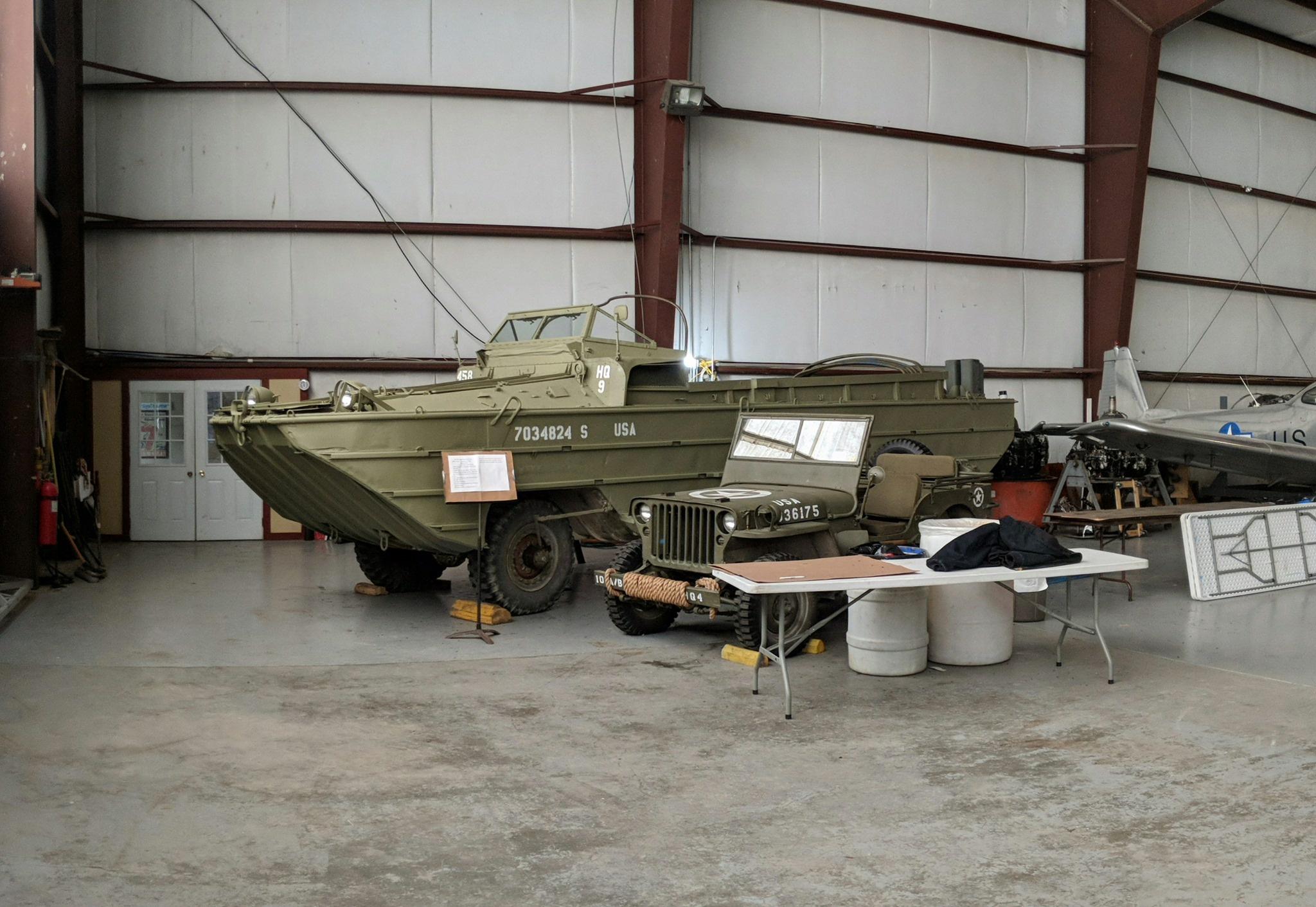
DUKW
DUKW 353
"The Duck"

"The Duck"
National Warplane Museum
The GMC DUKW 353, affectionately known simply as the "Duck," is one of the most recognizable and versatile vehicles to emerge from World War II. As an amphibious truck, the DUKW provided Allied forces with critical logistical flexibility, able to carry cargo, troops, and equipment seamlessly from water to land and back again.
Developed in 1942 by a partnership between General Motors and naval architects Sparkman & Stephens, the DUKW 353 combined a standard military 2½-ton truck chassis with a watertight hull, propeller, and rudder for amphibious operations. It played a vital role in countless amphibious landings, including the D-Day invasion of Normandy, where DUKWs delivered troops and supplies directly from ships to the beach under fire. Its reliability, adaptability, and unique capability to bypass damaged ports made it an indispensable asset for Allied logistics throughout WWII.
The DUKW’s ability to transition between sea and land allowed it to operate where traditional ships or trucks could not. It was used extensively for beach landings, supply runs, troop transport, medical evacuation, and disaster relief. After WWII, DUKWs remained in service during the Korean War and continued to serve civilian disaster response roles well into the post-war period.
1945 GMC DUKW 353 (Serial No. 55522158 / Military No. 7034824)
This example, built near the end of WWII in 1945, is on permanent loan to the National Warplane Museum from Livingston County, New York. Over the course of five years, museum volunteers completed a full restoration, returning the DUKW to fully operational, drivable condition. Today, it remains a visitor favorite, regularly operating during summer months and special events, where guests can ride aboard and experience firsthand the unique versatility that made the DUKW a vital part of Allied victory.
WWII Amphibious Utility Vehicle
Permanent loan from Livingston County
Method: Permanent Loan
Motor Pool
Other vehicles in our collection


